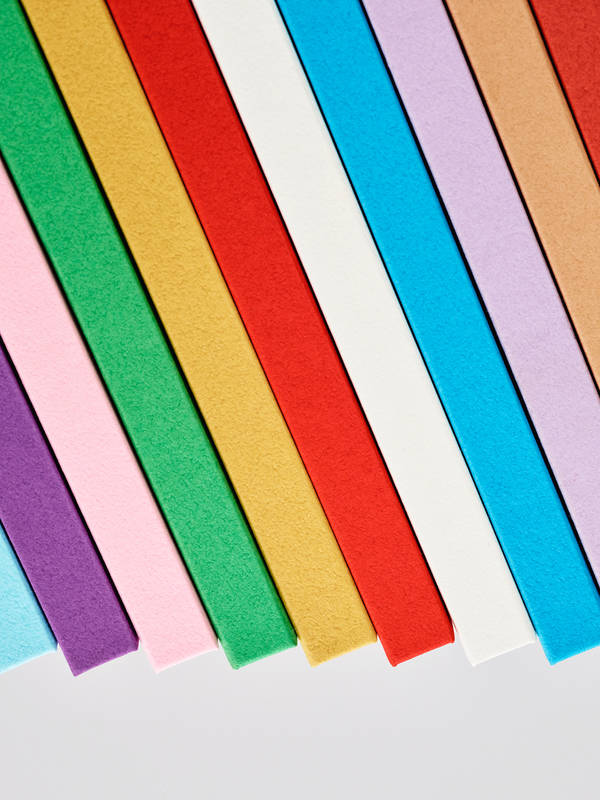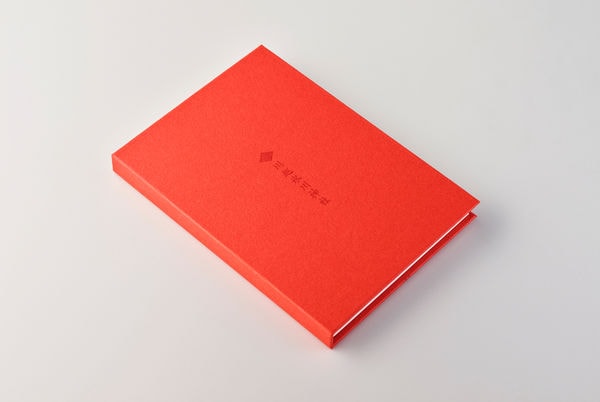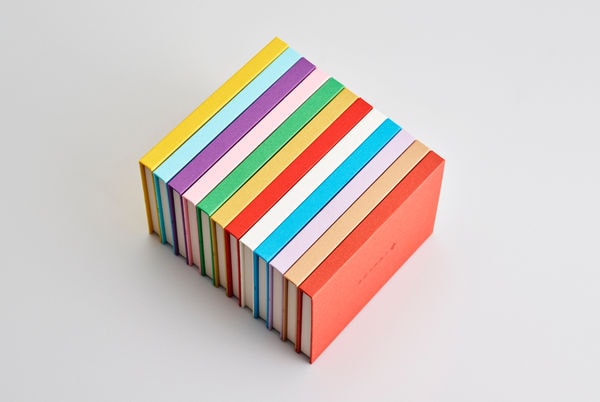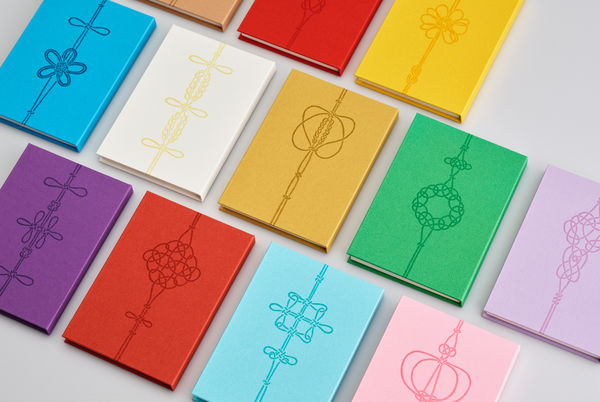
06
God Who Binds Everything – Even Books
A Shuin Book That Is Not Folded
We were approached by a printing company that asked us whether it would be possible for us to make shuin books for Kawagoe Hikawa Shrine in Kawagoe.
While a shuin book is basically a book with two folds alternately stacked and pasted together, it would still be difficult for us to mass-produce this type of books and, even if we did, we would have to outsource the work.
However, as we learned more about the contents of the book, we realized that the Kawagoe Hikawa Shrine places great importance on design down to the smallest detail, and they are very particular about their shuin books, too. There aren’t many factories in Japan that make shuin books, and there are many production regulations, so the person who approached us told us that he was looking for a factory that would be able to accommodate to non-standard specifications. The designer from the printing company also pointed out that we wouldn’t need to worry about having to make the shuin book folded simply for the fact that it’s a shuin book, which really gave us a lot more wiggle room. We ended up working directly with the designer.
How Should We Make the Book Go Well With Amulets We Already Have?
The Kawagoe Hikawa Shrine houses a god of marriage and is known for its knot amulet called “Mamori-musubi”, which possesses a shape and colors of a musubi (knot) related to the changing seasons of Japan.The shuin book was made based on the idea of “musubi (meaning “knot” or “binding together”)”, where a knot is tied, after which the book was bound by a thread. The cover of the book was then printed on letterpress. The papers were made from the Tanto series, which is different from what is used with the usual cloth shuin book.
Considering the established identity of the Mamori-musubi, a very beautiful amulet that represents the Kawagoe Hikawa Shrine, we at Shinohara suggested a simpler looking Swiss binding.
In order not to spoil the important concept of “musubi” with binding
On the cover of the book, the “musubi (knot)” pattern is printed by letterpress through the top and bottom (symbolizing the heaven and earth) of the book, but the designer didn’t want the design of the “knot” in the middle of the book to be visible in its broken state. We felt that this was why “musubi” was chosen in consideration of good luck, and we explained the details of the specifications and the background of the shuin book, and asked the craftsmen to cooperate with us in the fine tuning.In addition, the spine of the book is made in the form of a follow-back without gluing to prevent the thread from breaking, and the book was finishing using methods and functionality that were considered to be suitable for the designer’s intentions within the framework of bookbinding.
An Eye-Catching Presence at Production AreaAn Eye-Catching Presence at Production Area
Shinohara was involved in this project from the beginning, and, as far as the production of the book was concerned, the project was a memorable one for Shinohara Shiko as a whole because of the detailed instructions and background story of the project.
At the production area, the 12 colorful shuin book cards were stacked in an orderly fashion on a palette, and the presence of the cards was very impressive. When we opened the door of the studio first thing in the morning and looked at the stack of shuin books, we felt refreshed for reasons we didn’t quite understand. Perhaps it’s because the production staff put their “hearts” into it and carefully worked on the project, almost as if there were a God living inside the papers. We would be happy if those who hold these shuin books could feel the good will in these heartfelt works.



担当 : 篠原慶丞
テーマとクライアントさん、デザイナーさんと篠原紙工がちゃんと結んで進められたことで、今でも神社を訪れる方に愛される御朱印帳に仕上がりました。